The recent retirement of Associate Justice Anthony Kennedy has unleashed a tsunami of social and political commentary. We are definitely living in a partisan, tribal era – where the idea of compromise is a ticket to defeat and the idea of debate is scorned. The very idea of thoughtful, intellectual insight is derided as elitist – and while the mob has temporary power, it will not be assuaged by good arguments. Nevertheless, there are points of history that fascinate and are worth making. Kennedy was appointed by Ronald Reagan and that fact naturally forces us to have a close look at Republicans then and Republicans now.
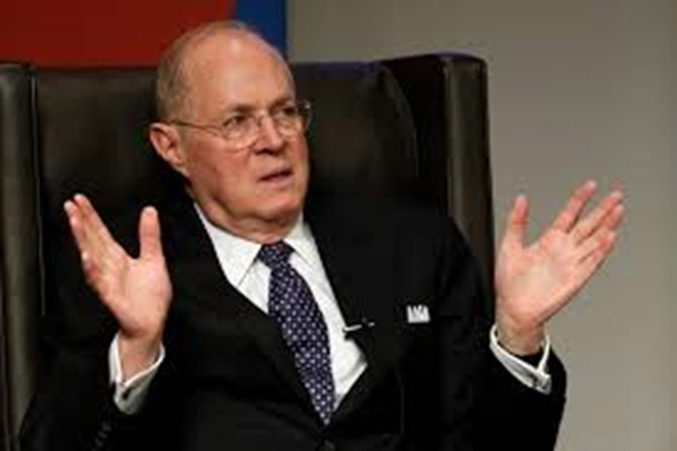 Anthony Kennedy, Associate Justice of the Supreme Court of the United States – 1987-2018
Anthony Kennedy, Associate Justice of the Supreme Court of the United States – 1987-2018
In the U.S. Senate, assenting to the President’s nomination to the Supreme Court has not been historically a partisan moment. It was assumed, quite rightly, that the President had the power granted to him in Article II, Section 2 to appoint ministers, ambassadors and Judges of the Supreme Court. The words’ “he shall appoint” may even imply a limitation on the Senate’s role to ‘Advise and Consent’. Nevertheless, as late as the appointment of Abe Fortas in 1965, his senate vote – like the majority of votes going back to John Jay’s nomination as Chief, by President George Washington in 1789 – was a voice vote, with no numbers tallied. This is remarkable when compared with the Senate – under Mitch McConnell who refused to allow the President his constitutional right to appoint a justice one year prior to an election, and his hypocritical determination to push through the President’s constitutional right to appoint a justice just five months prior to an election. I’m not naïve. As I’ve mentioned in an earlier blog, Justice Anthony Kennedy was confirmed at the tale end of a presidency in exactly the same conditions in which Merrick Garland was rejected. We are not the same people any more.
 Abe Fortas, Associate Justice of the Supreme Court of the United States. The last to be appointed on a voice vote in the US Senate.
Abe Fortas, Associate Justice of the Supreme Court of the United States. The last to be appointed on a voice vote in the US Senate.
The era of compromise, where the senate voted in almost unanimous numbers, to confirm a supremely qualified candidate is also over. If we make a quick survey of those candidates, it obvious why. Going back as far as John Paul Stevens, since his successor sits on the present court, the following justices have been confirmed with an overwhelming majority in the Senate, partly because of their qualifications and partly because it was important to show the people of the United States that their highest elected body had picked the best jurist – and not the expedient political choice – for the supposedly apolitical third branch of government.
| Supreme Court Justice | Year of appointment | Vote tally in the Senate |
| John Paul Stevens | 1975 | 98-0 |
| Sandra Day O’Connor | 1981 | 99-0 |
| Antonin Scalia | 1986 | 98-0 |
| Anthony Kennedy | 1987 | 97-0 |
| David Souter | 1990 | 90-9 |
| Ruth Bader Ginsburg | 1993 | 90-3 |
All the rest including the present chief and certainly the modern era justices have not been confirmed with this overwhelming support, because it is precisely after 1995 that Speaker Gingrich made his move to divide the associations of the democrats and the republicans with bitterness, rancor and stereotypical descriptions. Here we are now with a completely intolerant attitude to the other side – which means that at any time we benefit from only half of the choice, half of the wisdom, half of the energy and half of the engine. Our short term pleasures in partisan politics continue to damage the nation in ways that we cannot possibly comprehend.
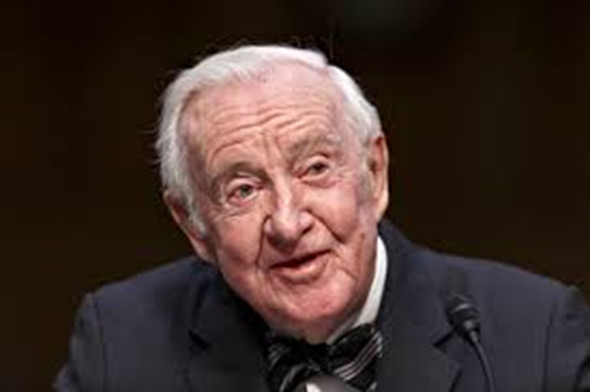 John Paul Stevens, Associate Justice of the Supreme Court of the United States – 1975-2010
John Paul Stevens, Associate Justice of the Supreme Court of the United States – 1975-2010
There is another interesting era that comes to a close with the retirement of Justice Kennedy. All the justices on the current court are either products of Harvard or Yale Law Schools. This includes Anthony Kennedy, however Kennedy’s background was west coast – and he spent time on the ninth circuit court. Similarly, Sandra Day O’Connor had not had the specifically Eastern Sea Board influences that govern the current court. Both of them brought to the court a freshness that was willing to uphold ‘individual rights’ over ‘originalism’ – to hold real people more valuable than textual observations and to exercise a conservativism that was always tempered with compassion. That era of conservative-compassion is long gone. But it plays into my next point.
 Sandra Day O’Connor, Associate Justice of the Supreme Court of the United States, 1981-2006.
Sandra Day O’Connor, Associate Justice of the Supreme Court of the United States, 1981-2006.
Current Chief Justice John Roberts was first nominated to fill her seat, but then was appointed to fill that vacated by Chief Rehnquist.
There is good evidence, supported by a number of different reasons, to suggest that Justices as they age lean more liberal. There is no converse element. Liberal justices lean more liberal too. It is not the normal adage. We are told that it is an exercise of heart that leads one to be a liberal in your mid-twenties, and an exercise of the brain that leads one to be a conservative by your mid-thirties. No one contemplated the gradual regression to liberalism that is seen on record, by conservative justices, including Nino Scalia who was far more liberal in his views in the late nineties than he was at his appointment in 1986. If one reads the writings of John Paul Stevens, the voice of conscience from the last format of Republicanism – his observations would get him nominated by a democratic president, and it is equally true that one could launch, run and win a campaign for the Presidency of the United States as a Democrat – using only the words of Ronald Reagan.
Kennedy’s swing vote – championing individual rights, in particular the right to privacy on which Roe v. Wade and the cases on LGBTQ rights have rested – has been part of both his diverse influences from the ninth circuit and his gentle aging. The fact that he authored the majority opinion in almost all the LGBTQ decisions that have brought advancement and equality to the lives of millions of people, is of great import. His clarion call for the rights of the individual will be sorely missed.
The concept of ‘stare decisis’, already a heap of tattered confetti is about to face its greatest tests. Can and will a court exercise judicial restraint, as GOP members have always argued – or will it resort to partisanship and uproot over 40 years of precedence. There is nothing faulty about reversing a decision that – on the face of it – is an embarrassment. But just as ‘stare decisis’ is not an ‘inexorable command’, as phrased by Chief Justice Rehnquist, it surely requires the same amount of inexorable command for the court to consider overturning their established decisions and to throw away the rules of precedence that stabilize society. If reversing, perhaps the justices should look at whether the original decision was as narrow as a 5-4 win. Perhaps, they should control their impulse to replace a unanimous or a 7-2 decision with the shadier 5-4. In unsteady times, people always look to the court for demonstrable stability. I’m not sure the current court can provide a sanctuary. Also, conservative justices should recall that they have almost always been on the wrong side of history. Dred Scott, Korematsu, and others have brought infamy on the justices who authored those opinions, whereas Brown v. Board of Education and countless other widely celebrated opinions have been unmistakably liberal and live in the psychology of every day Americans. When the already existing concept of ‘judicial review’ became cemented in our imaginations and constitutional procedures, it was by John Marshall’s landmark decision in Marbury v. Madison (and also worth researching – the lesser known Stuart v. Laird.) Both were decided in 1803, when the repeal of the Judicial Act of 1801 may have denied the court any jurisdiction at all. We now are acutely aware – as Marshall was then – of the balancing act he undertook to uphold points of law whilst deliberately shying away from political, partisan decision making. He was being watched by the newly empowered Jeffersonians and was aware of his ties to the Adams administration that appointed him. It was of paramount importance for him to establish the court as an impartial arbiter. The future of the United States Constitution depended upon it. Marshall’s instincts led him to “disregard” the politics of an issue if it was “put in competition with …his…duty” to the law – to restrain what he referred to as “the capricious will of the rulers of the day.”
This extraordinarily measured and responsible approach during extreme political crisis, with the Jeffersonian challenge to the Federalists in its ascendancy, and the future of the government and the constitution at stake, is remarkable. Remarkable now in three ways. Remarkable that Marshall showed this restraint when fellow Federalists might have expected him to assert and confront. Remarkable in the authoritative way in which judicial review was impartially introduced and maintained. Remarkable in the manner in which some of the current justices of the Supreme Court – abusing the power that has been entrusted to them – disregard the lessons Marshall sought to teach us.
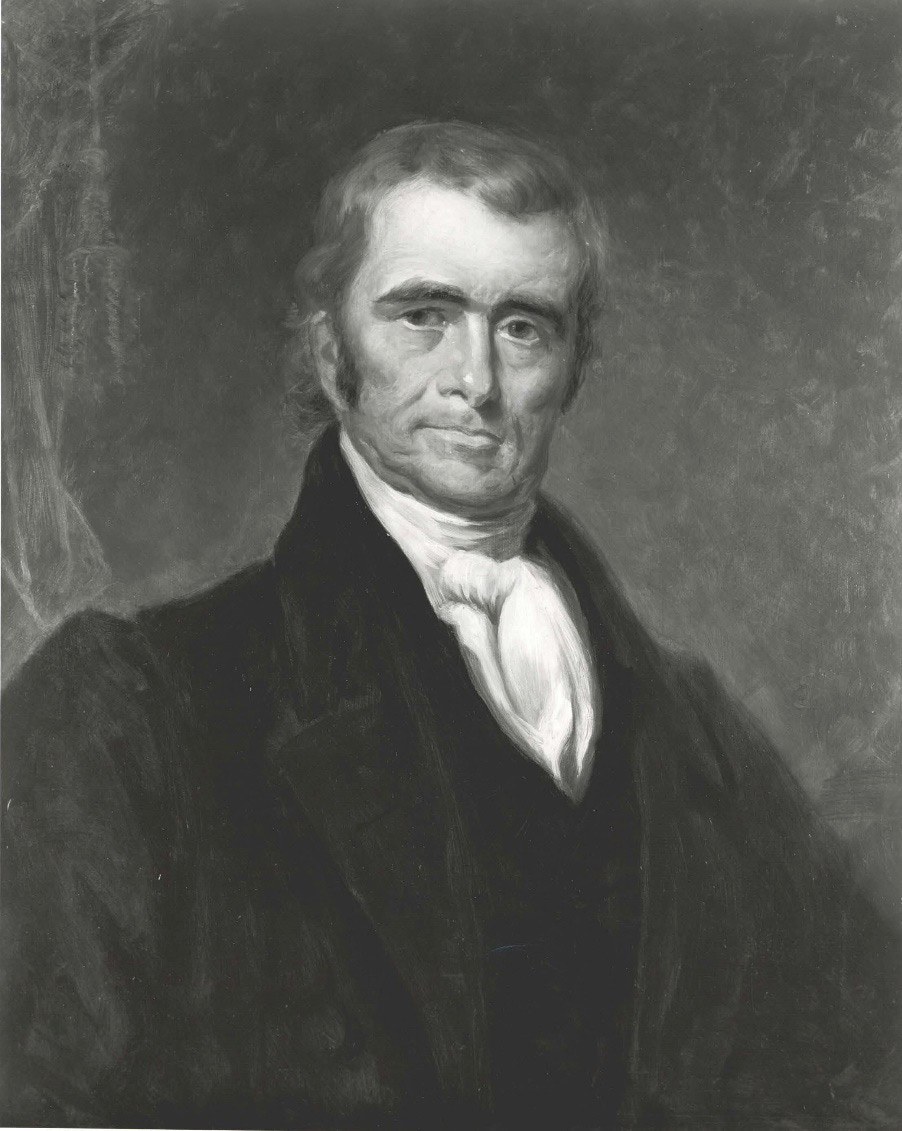 Chief Justice John Marshall. Secretary of State to John Adams and author and architect of the opinion in Marbury v. Madison, the case that established the precedent that the Supreme Court could strike down laws it deemed unconstitutional. This judicial review is part of almost every evolved international legal system since.
Chief Justice John Marshall. Secretary of State to John Adams and author and architect of the opinion in Marbury v. Madison, the case that established the precedent that the Supreme Court could strike down laws it deemed unconstitutional. This judicial review is part of almost every evolved international legal system since.
We are now in a similar moment of crisis. One partisan side is ferocious with a ‘no prisoners’ attitude and a leadership that is completely comfortable with misappropriation, lies, hypocrisy and quantifiable, visible damage to the nation and the constitution, as long as the narrower points of the agenda are met. Let’s have no umbrage at my stating it openly, when several members of the GOP have said as much themselves. The other side, naïve and lamenting the lack of decency, the lack of a moral compass, the lack of loyalty and the unpatriotic behavior of their colleagues, threatens to mobilize the ‘decent majority’ into conflagration. It is at times like this when all the citizenry – no matter their allegiances, realizing that their Constitutional promise of a healthy legislature and a sane executive have royally failed them, look to Article III and the Judiciary to restore them, in this case literally, mind and body.
So to have Justice Kennedy write in the manner he employed in his concurrence in Trump v. Hawaii, the official title of this administration’s racist travel ban -is as much a commentary of the precarious times in which he leaves the court as it is a ‘cop out’ for a man who at times has summoned inestimable quantities of moral fortitude. His concurrence is not about the case at all, except to affirm executive authority, which is the de facto Republican/Federalist position in any case. He almost takes the opposing view for a split second, but remands the case to the lower court. Then we have unrelated warnings and admonitions about the Constitutional responsibilities of Officers of the United States, the moral sense of decency expected of them, and the far-reaching consequences of inflammatory free speech that is irresponsibly and deliberately encouraged and has no place in constitutional stability. It castigates the president for his manners and his handling of his office, and for good measure suggests that ill considered foreign diplomacy is not in the best interests of the Constitution – a document the president has sworn to uphold and with which Kennedy has spent a lifetime in priesthood.
Kennedy whispers his support of executive power, and then rips into the current holder of the office, with what he obviously considers important warnings about our protocols, but barely hiding a worry, contempt and admonition for what has already come to pass. Here below is Kennedy’s entire concurrence. No reason to be afraid of retaliation. POTUS and his coterie are not inclined to read a concurrence to a decision in their favor, when they are disinclined to read anything at all.
Realizing what is plain to see, knowing that this is a particularly troubling time, inwardly knowing that his voice has been the calming voice of reason that crossed the great divide to do what John Marshall referred to as ‘his duty’ to the law, why would he succumb to his long desired retirement – now – in this star-crossed moment. Why would he give his seemingly evolved seat on the court into the hands of harsh, hardline Republicans who don’t often see the nuanced versions of law let alone the individual rights that he has championed from the ‘swinging center’ of the court. Why now, this gift to the overtly ridiculed president?
Perhaps it’s a personal sense of poetic justice. Kennedy was nominated and affirmed to the court in President Ronald Reagan’s last ‘lame duck’ year, 1987. Apparently, “The North Remembers”. Reagan had originally nominated Robert Bork, who was forced to withdraw under a barrage of pressure from democrats, who saw him as a compliant accomplice to the Nixon/Watergate drama. Next up was Douglas Ginsburg, whose nomination was also withdrawn -by Ginsburg himself- after it was revealed that he used marijuana, a fact that was of concern to his contemporaries, but would not be an obstacle to the successful ascent of Justice Clarence Thomas in the following decade or President Obama in 2008. Here’s the deal. Ginsburg was a noted professor at Harvard Law and someone whom Kennedy would have held in high esteem as an alumnus. Bork was also a very respected figure in conservative jurisprudence. Kennedy considered him a hero, and very unfairly treated. Many of his ideals and reasonings are distinctly ‘Borkian’. The scorched earth politics that met Bork’s nomination made Kennedy’s hearings more contentious than they should have been, and Kennedy probably remembers – all too clearly – the atmosphere in the room not only for himself, but witnessing the humiliation of Bork. Democrats controlled both the Senate and the House and were in the middle of exercising their version of ‘hardliners’ – such as it was – in the habitual cycle of US Politics.
This seemingly bizarre timing by Kennedy returns Robert Bork’s “stolen” nomination – from which battlefield he emerged as an Associate Justice – back to a similarly disposed, single party controlled Senate and House – this time, hardliners in earnest, todays GOP – the legislative equivalent of European soccer hooligans. I will conjecture further, that on coaching from Samuel Alito, whose confirmation was almost as painful a public process as Clarence Thomas’, these justices, simply don’t want their republican colleagues to endure what they did. They want the quick ‘in/out’ ‘Gorsuch, up or down’-‘thank you for playing’…’shut the door behind you on your way out’ version of hearings they just saw. Come November that might be harder to do.
There is a lesson to be learned, – by both sides – which almost never is –
O Fortuna
rota tu volubilis,
status maius
vana salus
semper dissolubilis
Many thanks!








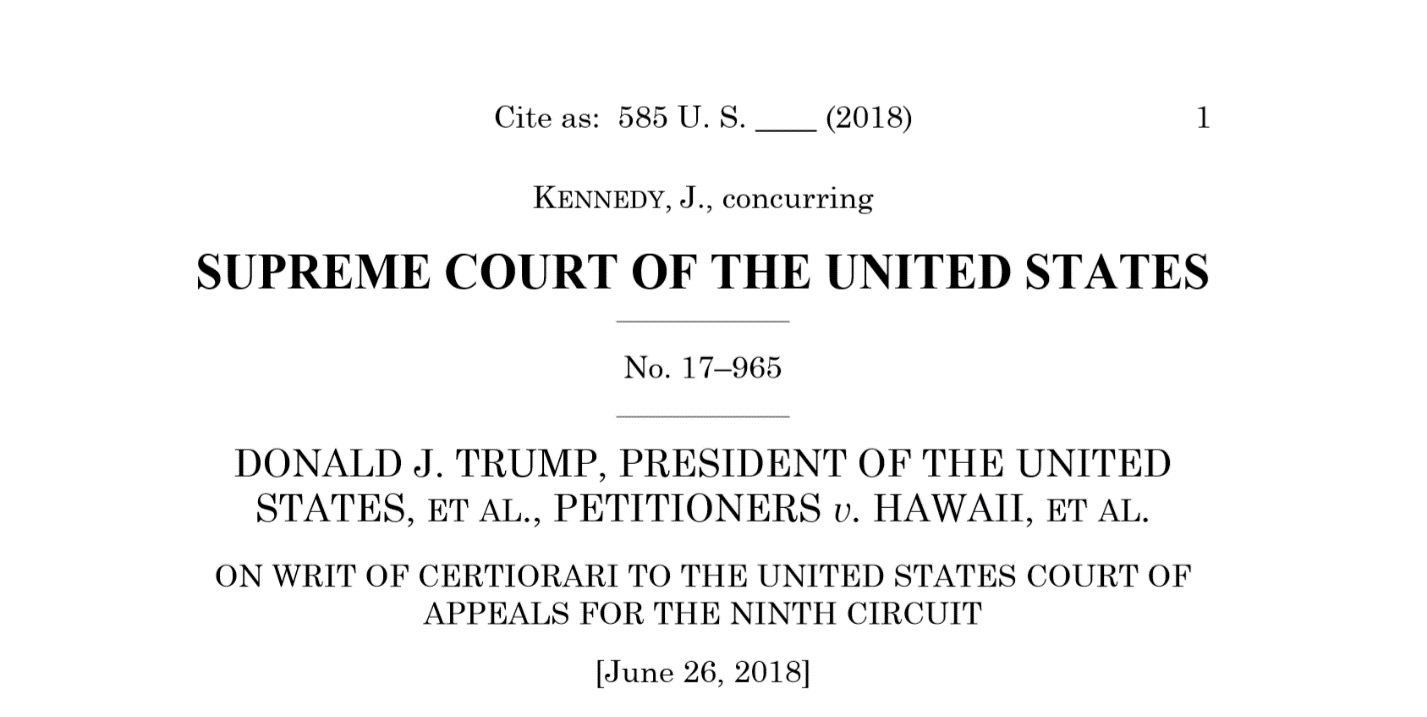
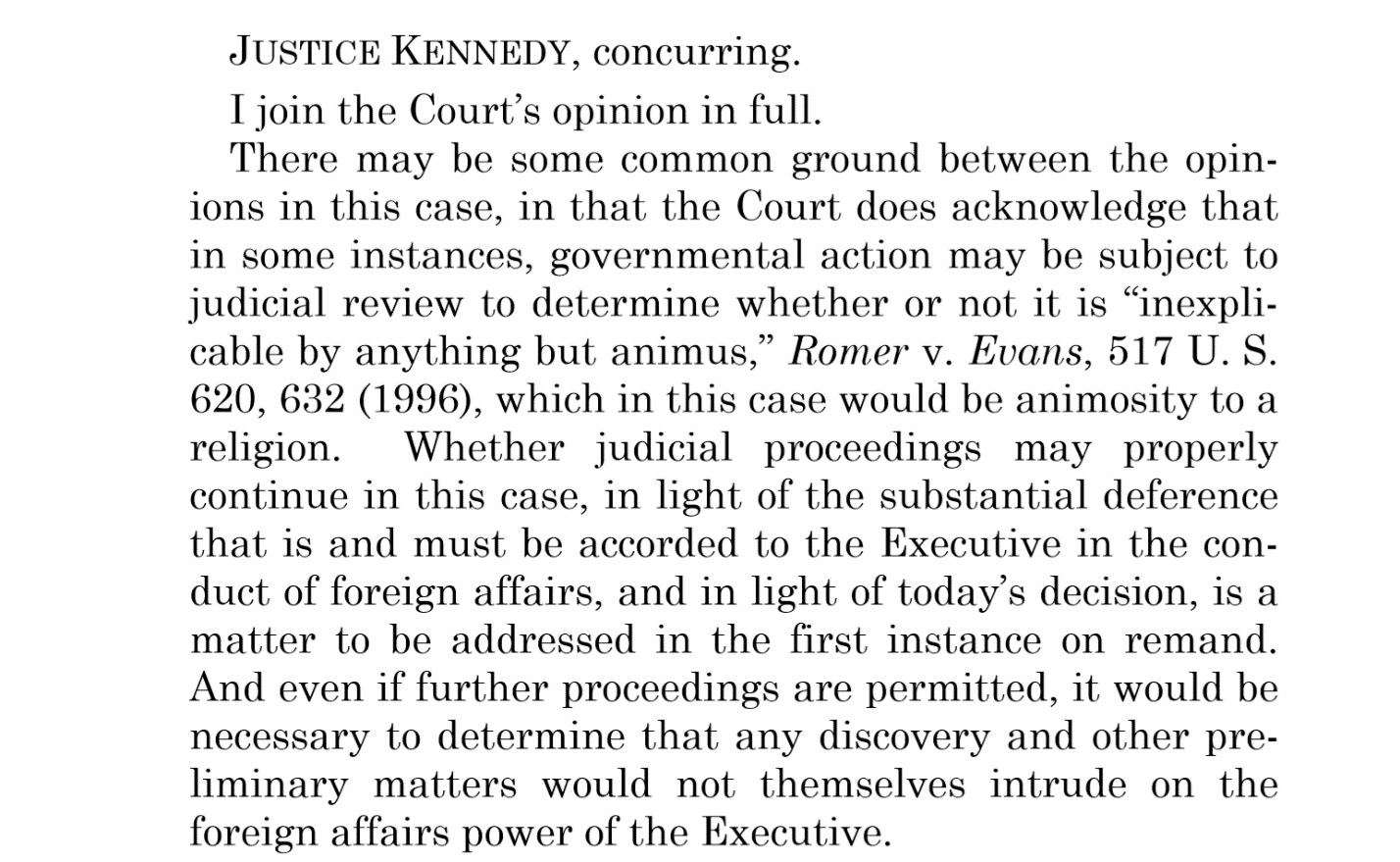
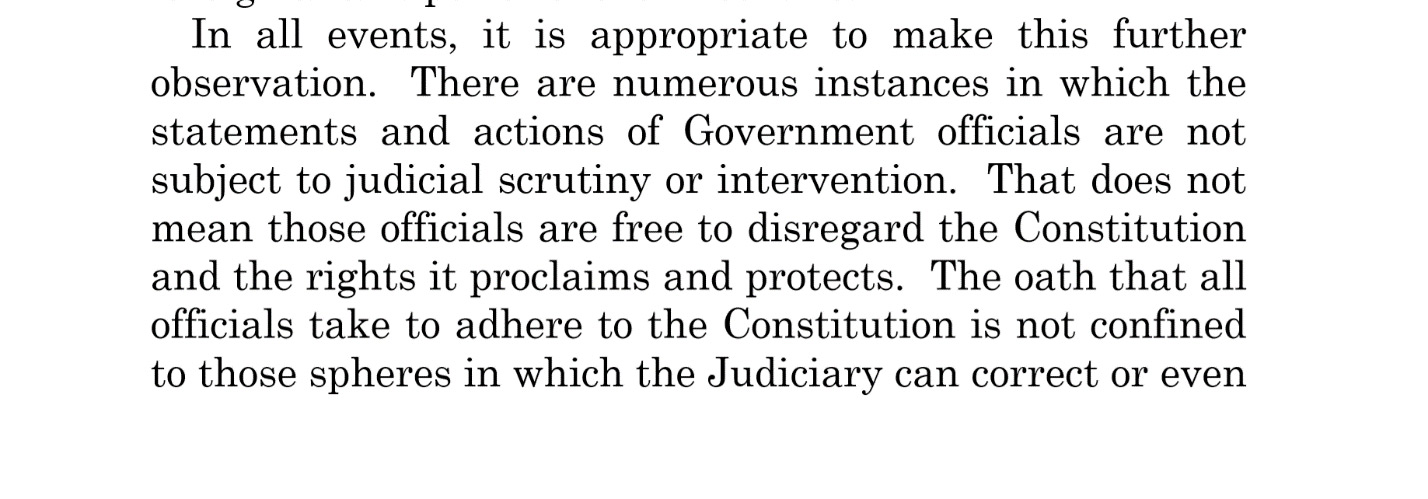
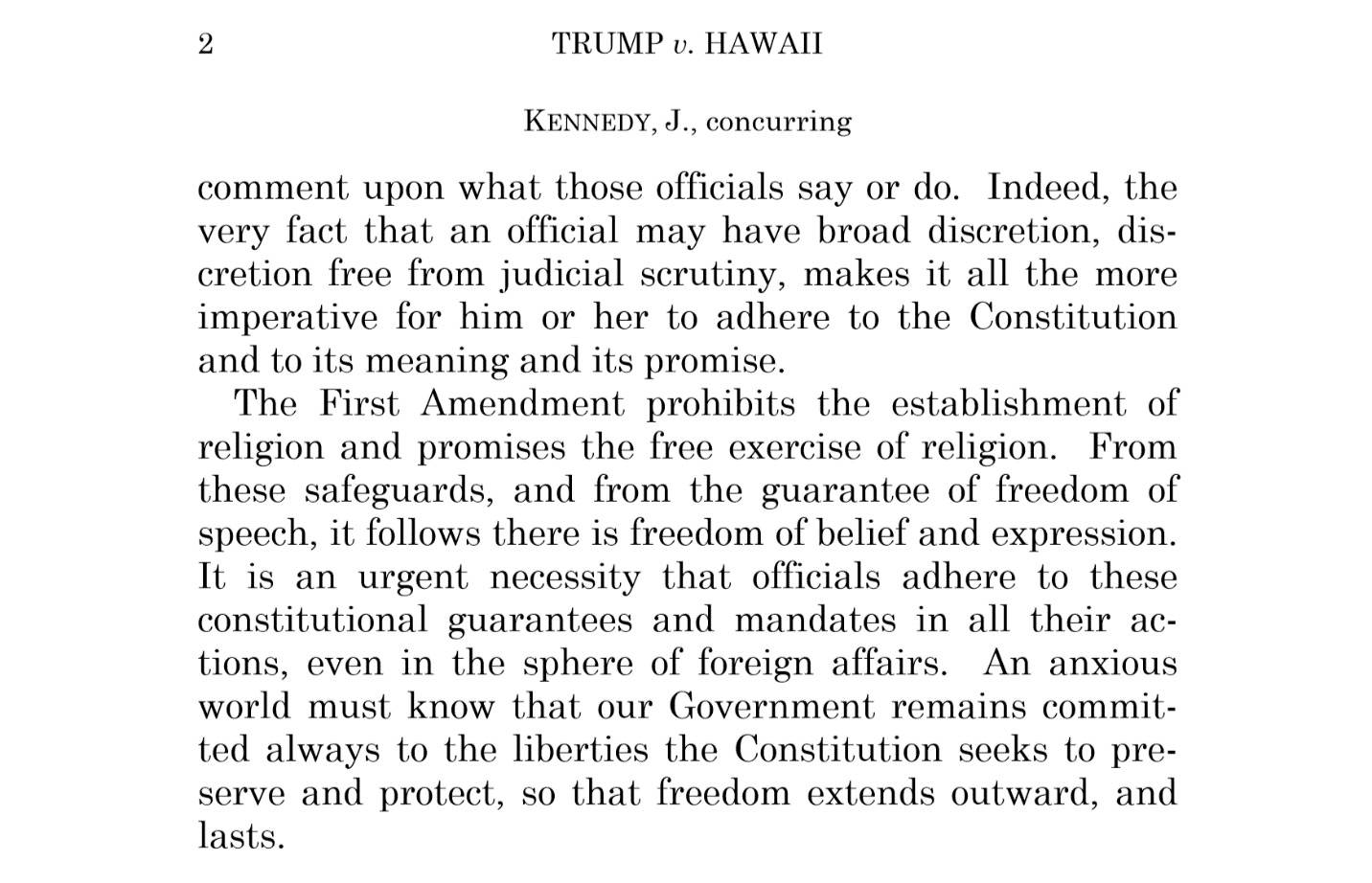
Zane – great article! (As always) Have you thought of submitting it to the New York Times? ‘Opinion’ section/column. F
I agree — worth a NY times submission!
I think you have a J.D. [doctor Juris]for this post